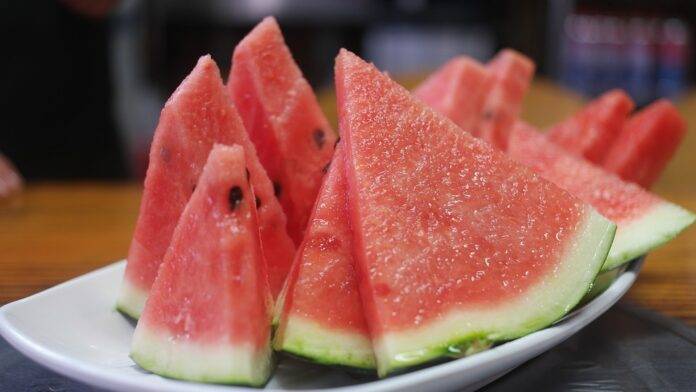Introduction
Watermelons are one of the most beloved fruits globally, known for their refreshing taste, hydrating qualities, and nutritional benefits. As the demand for watermelon continues to grow, it becomes increasingly important for farmers and agricultural businesses to select the best cultivars suited to various climates and markets. This report aims to highlight the best watermelon cultivars for different climatic conditions, market preferences, and financial viability.
The Global Watermelon Market Overview
The global watermelon market has been on a steady rise, with an estimated market value of USD 4.3 billion in 2022. Forecasts suggest that this figure will reach approximately USD 5.2 billion by 2027, growing at a CAGR of 4.3%. The United States, China, and Turkey are among the top producers, contributing significantly to global supply.
Market Segmentation
The watermelon market can be segmented based on various factors:
1. **By Variety**: Seedless, seeded, mini, and specialty varieties.
2. **By Application**: Fresh consumption, processed products, and juice.
3. **By Region**: North America, Europe, Asia-Pacific, Latin America, and the Middle East & Africa.
Each of these segments presents unique opportunities and challenges for growers, making it essential to choose the right cultivar.
Understanding Climatic Conditions
Watermelons thrive in warm climates with plenty of sunlight. However, specific cultivars may perform better in different environmental conditions.
Ideal Growing Conditions
– **Temperature**: Optimal temperatures range between 70°F and 90°F (21°C to 32°C).
– **Soil**: Well-drained, sandy loam soils with a pH of 6.0 to 6.8 are ideal.
– **Water**: Regular irrigation is essential, especially during dry spells, as watermelons require about 1 to 2 inches of water per week.
Climate Variations
1. **Tropical Climates**: High humidity and temperatures.
2. **Temperate Climates**: Moderate temperatures with distinct seasons.
3. **Arid Climates**: Low humidity and high temperatures.
Each climate type necessitates specific watermelon cultivars that can withstand local conditions.
Best Watermelon Cultivars for Tropical Climates
Tropical regions often experience high humidity and temperatures, making it essential to select cultivars that can thrive in such conditions.
1. Crimson Sweet
Crimson Sweet is a popular cultivar known for its sweet, juicy flesh and vibrant red color. It is resistant to common diseases like anthracnose and fusarium wilt.
– **Market Preference**: This cultivar is favored in markets that prioritize taste and quality.
– **Yield**: Typically yields around 30-35 tons per hectare.
2. Jubilee
Jubilee watermelons are large, often weighing 30-40 pounds. They have a sweet flavor and are known for their durability in transport.
– **Market Preference**: Ideal for wholesale markets due to its size and robustness.
– **Yield**: Can yield up to 40 tons per hectare under optimal conditions.
Best Watermelon Cultivars for Temperate Climates
Temperate climates provide a balanced environment for watermelon cultivation, with sufficient sunlight and moderate temperatures.
1. Sugar Baby
Sugar Baby is a small, round watermelon that is particularly popular in home gardens and local farmers’ markets.
– **Market Preference**: High demand for personal consumption and small-scale sales.
– **Yield**: Approximately 20-25 tons per hectare.
2. Charleston Gray
This cultivar is known for its elongated shape and light green rind. It has a sweet flavor and a crisp texture.
– **Market Preference**: Well-received in both retail and wholesale markets.
– **Yield**: Yields can reach up to 30 tons per hectare.
Best Watermelon Cultivars for Arid Climates
In arid climates, water conservation and drought resistance are pivotal for successful cultivation.
1. Desert King
Desert King is specifically bred for arid regions, exhibiting excellent drought resistance. It produces large, sweet melons with a thick rind.
– **Market Preference**: Popular among farmers in water-scarce regions.
– **Yield**: Approximately 25-30 tons per hectare.
2. Black Diamond
Black Diamond melons are known for their dark green rind and sweet, red flesh. They are resistant to common pests and diseases.
– **Market Preference**: High demand in local markets due to unique appearance and flavor.
– **Yield**: Yields can reach 30 tons per hectare with proper irrigation.
Financial Considerations
Selecting the right cultivar is not just about climatic suitability; financial viability is equally important.
Cost of Cultivation
The cost of cultivating watermelons can vary based on several factors, including:
– **Seed Costs**: Premium seeds can range from USD 2,000 to USD 5,000 per hectare.
– **Fertilizer and Pest Control**: Typically, expenses range from USD 1,000 to USD 1,500 per hectare.
– **Labor Costs**: Labor costs can vary significantly based on location but generally fall between USD 1,500 and USD 3,000 per hectare.
Revenue Generation
1. **Market Price**: The average market price for watermelons is approximately USD 0.25 to USD 0.75 per pound.
2. **Yield**: Assuming an average yield of 30 tons per hectare, a grower could generate revenue between USD 15,000 and USD 45,000 per hectare, depending on the market price.
Challenges in Watermelon Cultivation
While watermelon cultivation can be profitable, several challenges must be addressed.
Pest and Disease Management
Watermelons are susceptible to various pests and diseases, including aphids, cucumber beetles, and powdery mildew. Regular monitoring and integrated pest management strategies are essential.
Climate Change
Shifts in climate patterns can impact watermelon yields. Farmers must adapt their practices to mitigate the effects of extreme weather events.
Conclusion
Choosing the best watermelon cultivars for different climates and markets is crucial for maximizing yield and profitability. By understanding the specific needs of various cultivars and the challenges faced in watermelon cultivation, farmers can make informed decisions that align with market demands and environmental conditions. As the global watermelon market continues to grow, the right cultivar selection will play a significant role in the success of growers worldwide.
Read: The Global Watermelon Industry in 2025 – Market Trends, Challenges, and Future Outlook



